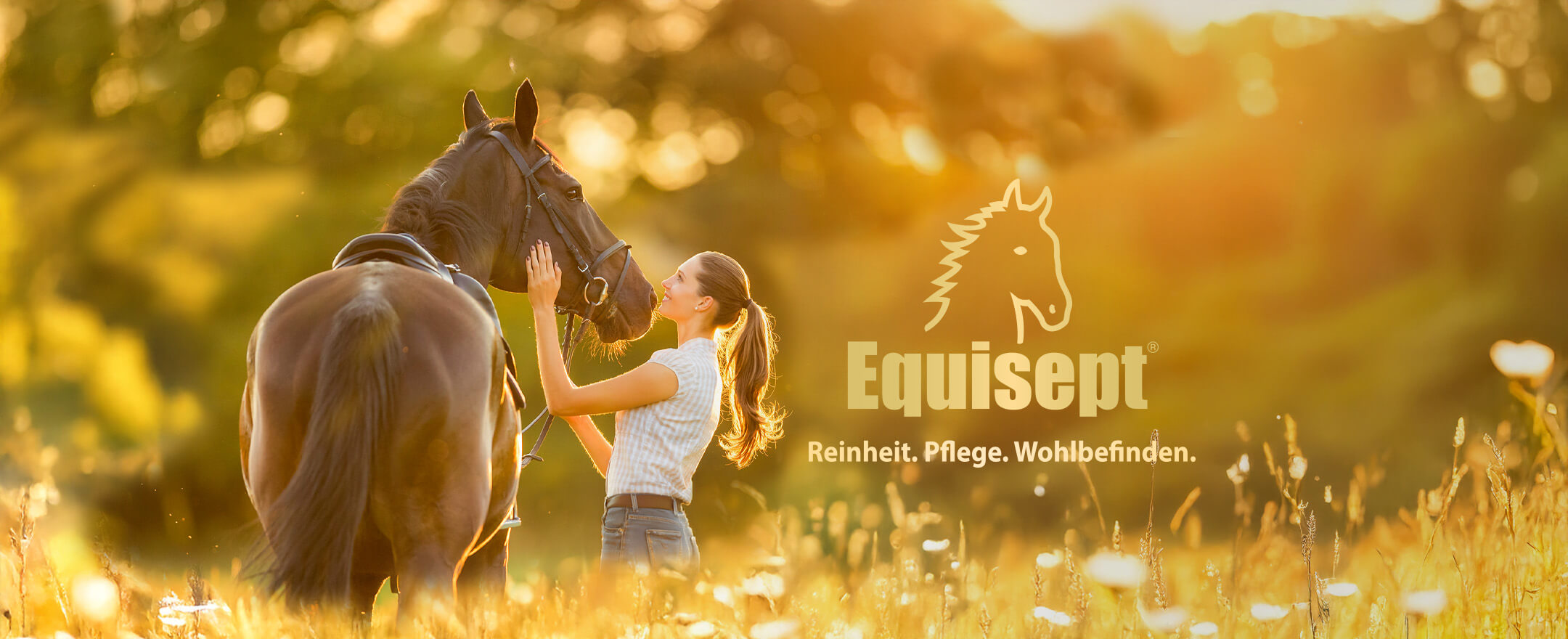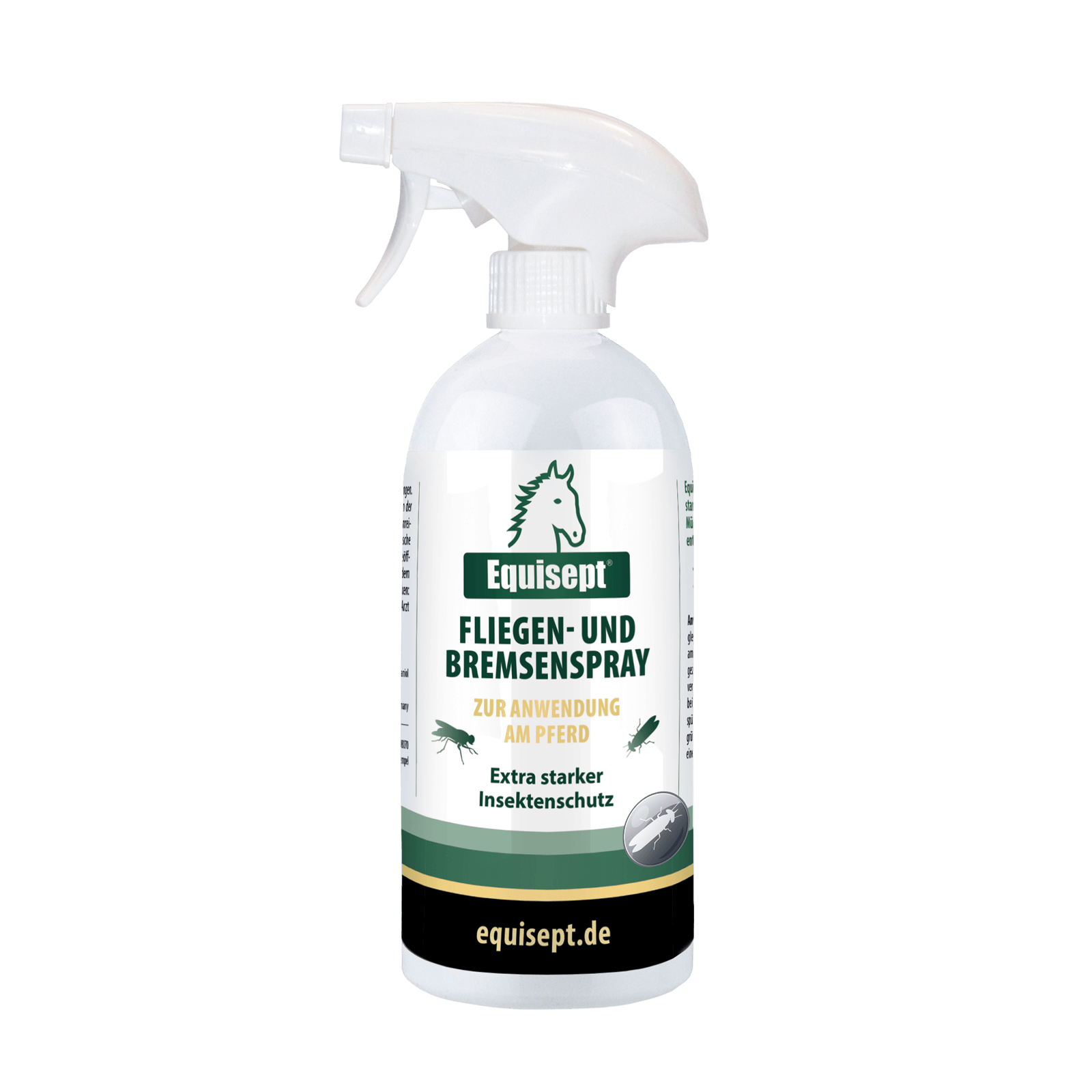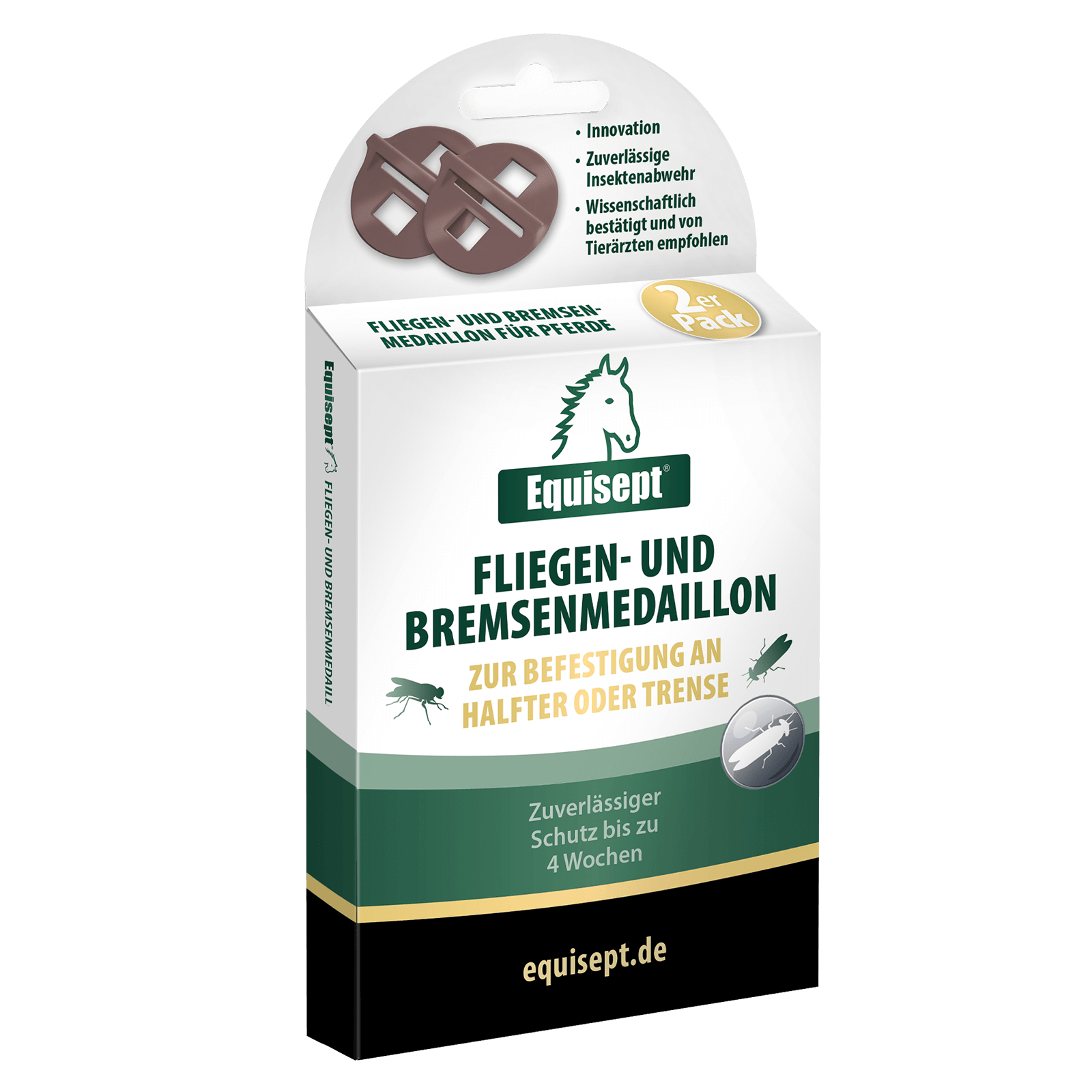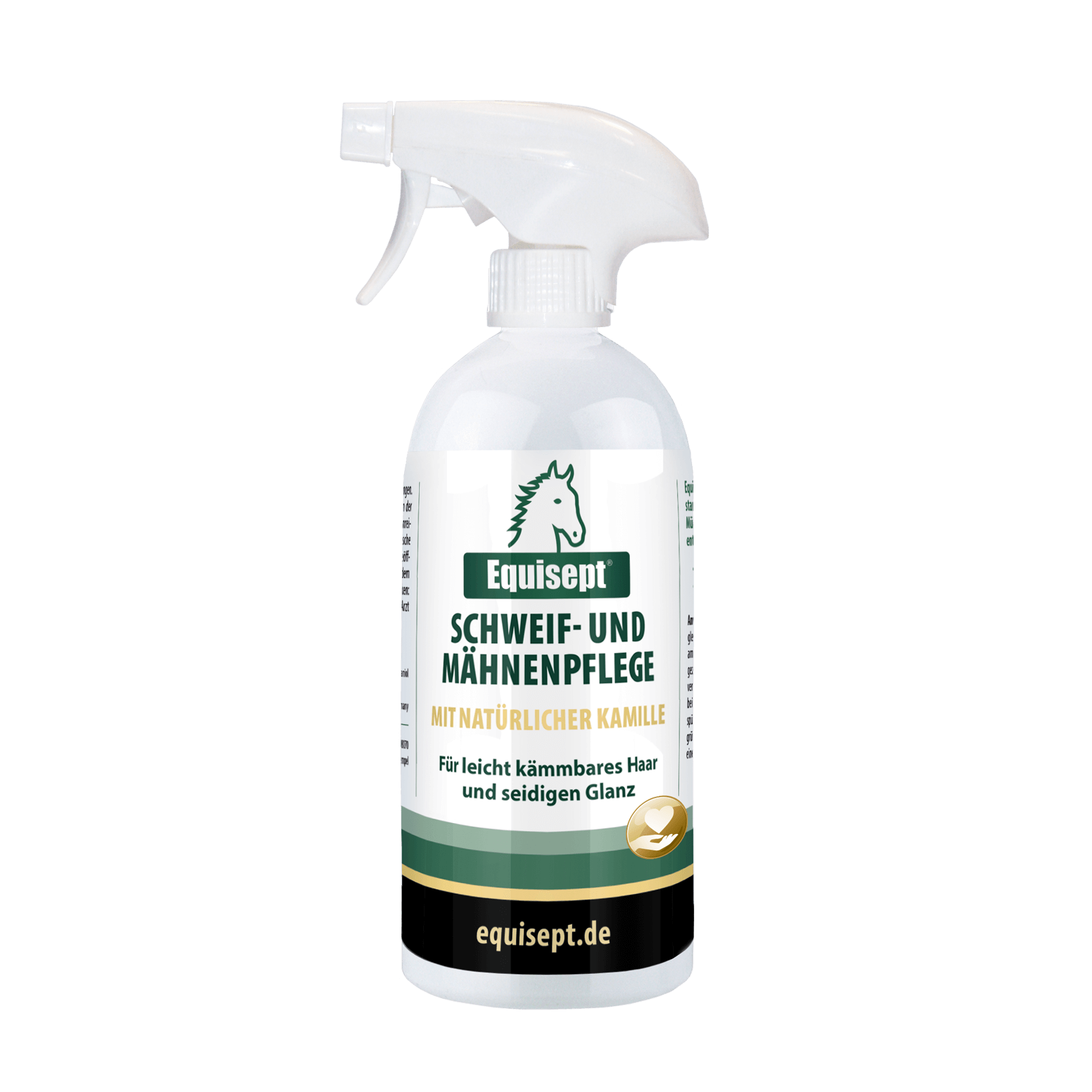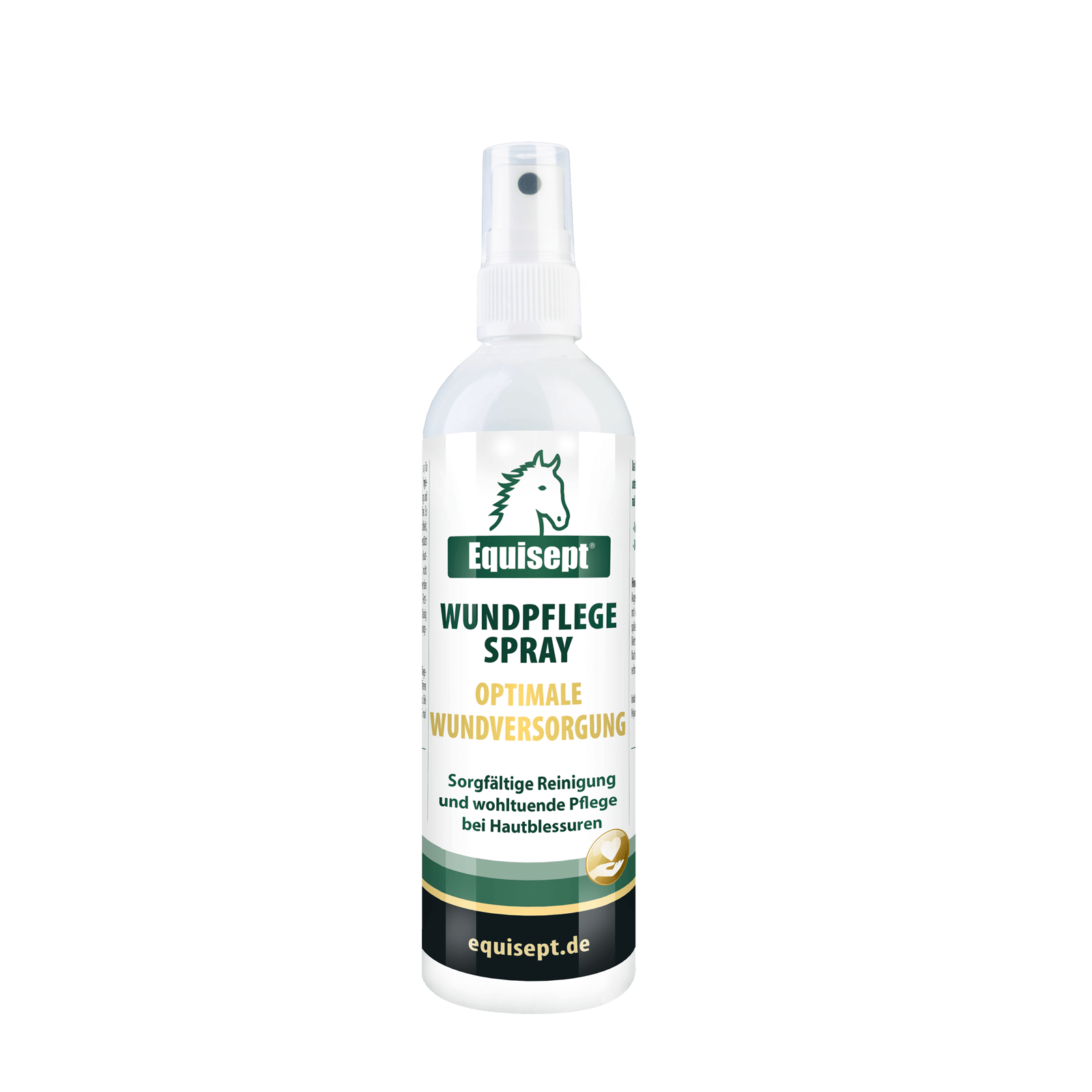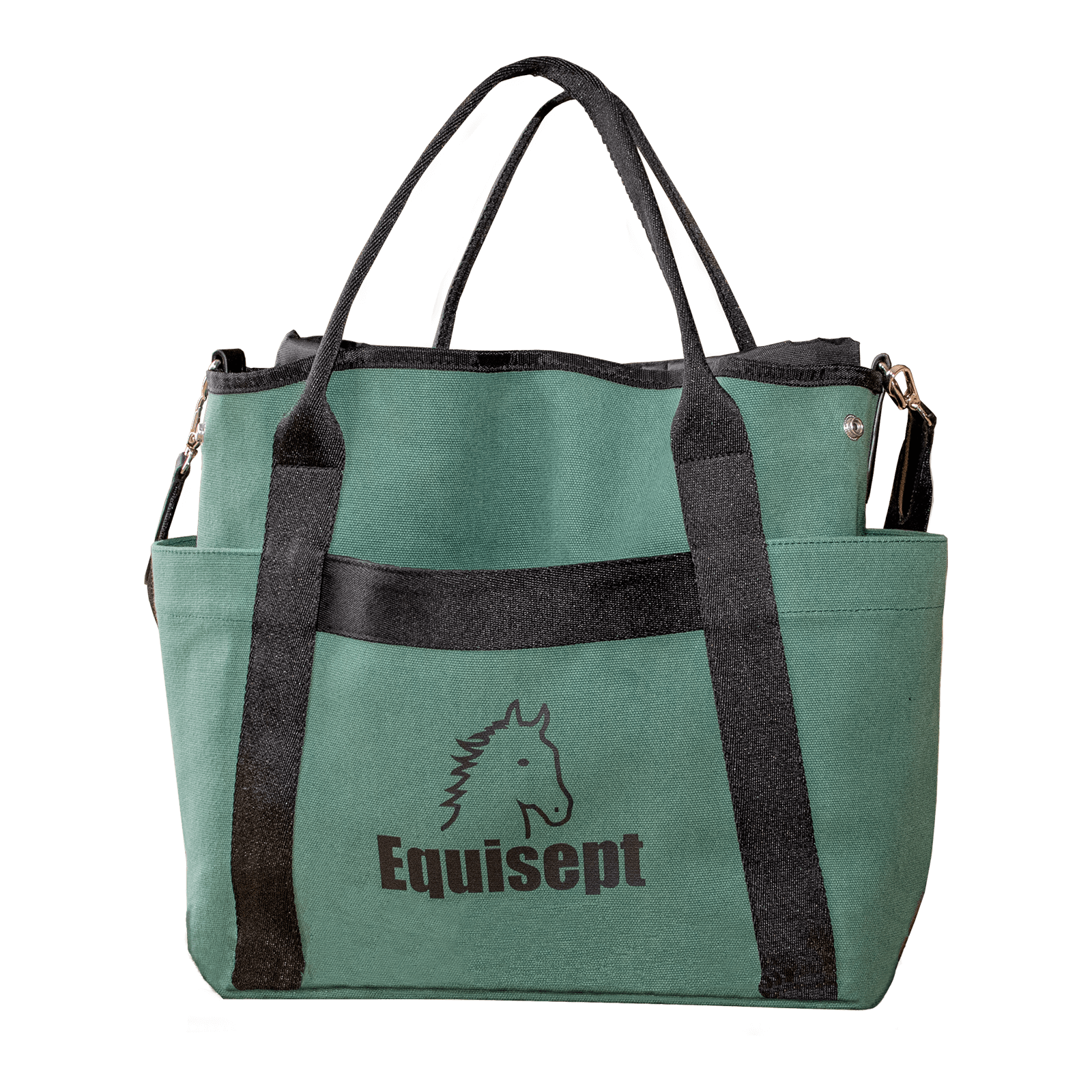Equisept - FAQ
vermin
In addition to the usual flies, horseflies, deer flies, ticks, and mosquitoes also seek out horses. Their bites and stings are painful, bothersome, and can also transmit pathogens that cause various diseases.
Here is a list of the most important pests:
Flies: Flies are at their peak from June to October. They often lay their eggs in leftover food or manure piles and multiply within a few days. Horses are bothered by sucking and biting flies. They prefer to stay on the horse's head and around its nostrils, which can cause considerable unrest. Small wounds serve as a food source for them – this disrupts wound healing and can lead to infections. There are also pathogens that can be transmitted to horses by flies.
Horseflies: Horseflies fly between April and August. Horseflies are particularly active on hot and humid days and can be found in large numbers throughout the day and into the evening. Horsefly larvae live where organic matter is rotting – in areas where horse manure is composting or on bridleways at the edge of fields, you should be prepared for horseflies. The horsefly bite causes significant pain and can quickly cause the horse to panic.
Deer flies: Horses struggle with deer flies from May to November, with populations peaking between August and September. Deer flies are particularly common in wooded areas and near bodies of water. They attack their host, latch onto their claws, and immediately lose their wings before sucking blood. The bite causes significant pain, to which horses react extremely nervously. Rashes develop at the site of infection, which can become infected and then require treatment.
Ticks: When out in nature, especially in forests, roadsides, and meadows, you have to expect ticks. Tick bites are neither painful for humans nor horses and may at most be accompanied by mild itching. However, ticks transmit bacteria, viruses, and parasites that can cause diseases in humans and horses, such as Lyme disease, from which you and your horse should take the best possible precautions.
Mosquitoes: Mosquitoes are common during the hot summer months. The intensely itchy and inflamed bites of culicoid midges, also known as biting midges, can cause sweet itch due to allergens in their saliva.
Horse stables and their surroundings often provide a perfect habitat for vermin. Pests such as moths, silverfish, woodlice, and cockroaches are common here.
The latter cause considerable damage, especially in the stable, especially in the feed and tack room, and also in the transporter. On the one hand, cockroaches damage wood, leather, and the feed in the feed room, for example. On the other hand, they transmit pathogens such as salmonella and mold spores. Furthermore, cockroach droppings can trigger allergies. Because they reproduce at a rapid rate, cockroaches must be controlled at all costs.
It depends on the product. Products for use on horses last between eight hours (fly and horsefly spray) and up to four weeks (fly and horsefly medallion).
Yes. Both the fly and horsefly spray used on horses and the fly and horsefly medallion are doping-free.
The fly and horsefly spray for use on horses can also be used on pregnant mares. There is currently no data available for the Fly and Horsefly Medallion in pregnant or lactating mares. Therefore, its use during this period is not recommended.
Care
The wound care spray is ideal for treating minor skin injuries. It allows for efficient wound cleansing and supports subsequent wound healing. The wound care spray is also suitable for the care of skin, coat, and hooves. It is recommended by veterinarians and is drug-free.
Depending on the condition of the tail and mane, the product can be used daily. The nourishing chamomile oil facilitates combing and prevents dirt buildup.

